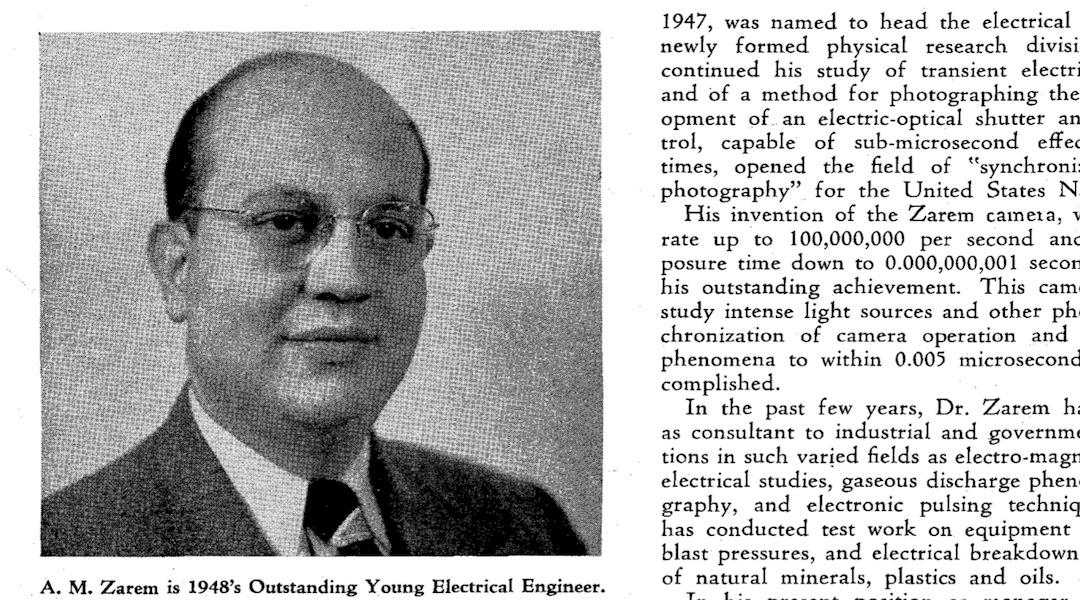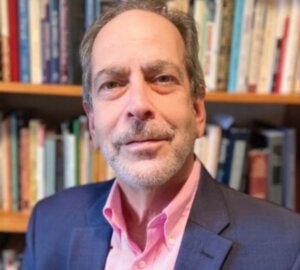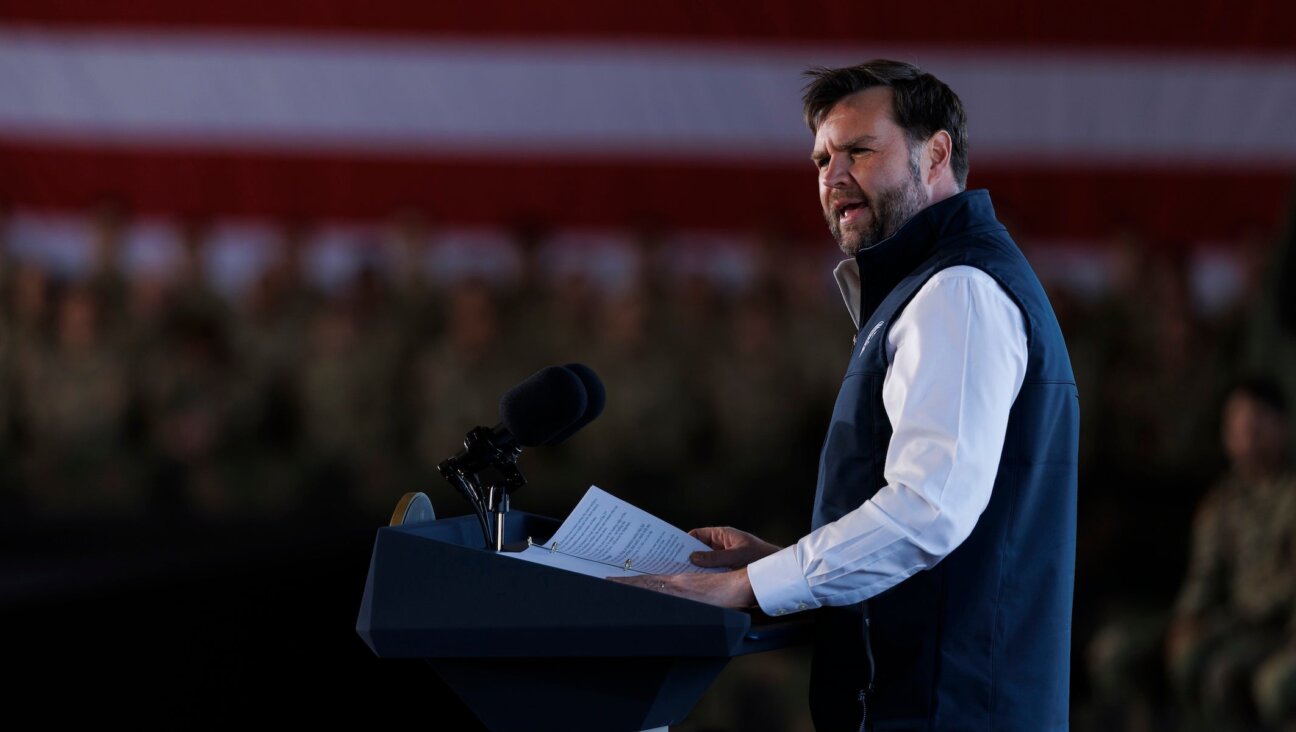Abraham Zarem, one of the last surviving Manhattan Project scientists, dies at 106
The electrical engineer, a regular at Sinai Temple in Los Angeles, also developed the fastest camera of its time

An item about Abraham Zarem appears in the January 1949 issue of “Engineering and Science Monthly,” a magazine for alumni of the California Institute of Technology.
(JTA) — Abraham Zarem was 28 when he joined the Manhattan Project, the vast U.S. government effort to develop the atom bomb.
Engineers like him gathered in secret laboratories in New Mexico, California, New York City and elsewhere to provide the practical know-how the theorists lacked.
“‘They were geniuses, but didn’t know how to build a f—king thing,’” Zarem recalled, according to his longtime rabbi at Sinai Temple in Los Angeles, David Wolpe.
Zaum, who went on to a distinguished career in technology, business development and leadership management training, died March 8 in Los Angeles. He was 106, and one of the last surviving members of the army of scientists, technicians, bureaucrats and clerks who helped build the weapon that would force Japan’s surrender in World War II and usher in the Atomic Age.
After the war, Zarem joined the staff of the United States Naval Ordnance Test Station at Pasadena, where as head of the electrical section of the physical research division he developed a high-speed camera used to study intense light sources and other phenomena. Popular Mechanics called the Zarem camera — 25,000 times faster than any movie camera then available — a “miracle.”
In 1963, Zarem served as senior vice president of Xerox, leaving in 1970 to launch a consulting business. He returned to Xerox as founder and CEO of its Xerox Development Corporation in 1975. He later served as founder and managing director of Frontier Associates, a technology consultancy.
Born in Chicago on March 7, 1917, Zarem was valedictorian of his undergraduate class at the Armour Institute of Technology (now the Illinois Institute of Technology), and earned his doctorate on the physical properties of the electric spark at the California Institute of Technology. He headed the Stanford University Research Institute in Los Angeles while still in his 30s.
Later he served as distinguished senior advisor for Neuroscience Technology Transfer for the UCLA Brain Research Institute and a member of the Urology Advisory Board of the UCLA Geffen School of Medicine. Additionally, he served as distinguished visiting executive in Science and Technology for Caltech’s Jet Propulsion Laboratory.
One of Zarem’s companies, Electro-Optical Systems, developed the “world’s first practical ion engine” — an experimental high-energy thruster for spacecraft. It now resides in the Smithsonian Institute in Washington, D.C.
Zarem was also a regular at Temple Sinai, where Wolpe said Zarem mentored him as a young rabbi. Zarem and his wife Esther were generous contributors to the congregation; Wolpe remembered Zarem chanting from the book of Jonah on Yom Kippur when he was 99.
“Abe Zarem was a brilliant, buoyant, passionate, pious and philanthropic person,” Wolpe told the Jewish Telegraphic Agency this week. “He had a central role in some of the key scientific events of human history — the atomic bomb, the moon landing — and yet took an interest in everyone lucky enough to meet him. Abe was truly yachid b’mino — unique in his time. He will be greatly missed.”
Unlike with some of his collaborators on the Manhattan Project, there is no public record of Zarem grappling publicly with the moral implications of the weapon he helped develop. Years after their war work at Caltech, a man who worked under Zarem as a lab assistant said he felt no guilt, because without the detonations at Hiroshima and Nagasaki, he told a local newspaper, “We would have lost 500,000 Americans in the invasion of Japan.”
But Zarem did go on the record in 1952 on a different topic, in advice he shared with a labor and management magazine: “Keep your feet warm, and your head cool. And watch out for the hotheads with cold feet.”
His survivors include his children, Janet, David and Mark.
This article originally appeared on JTA.org.















